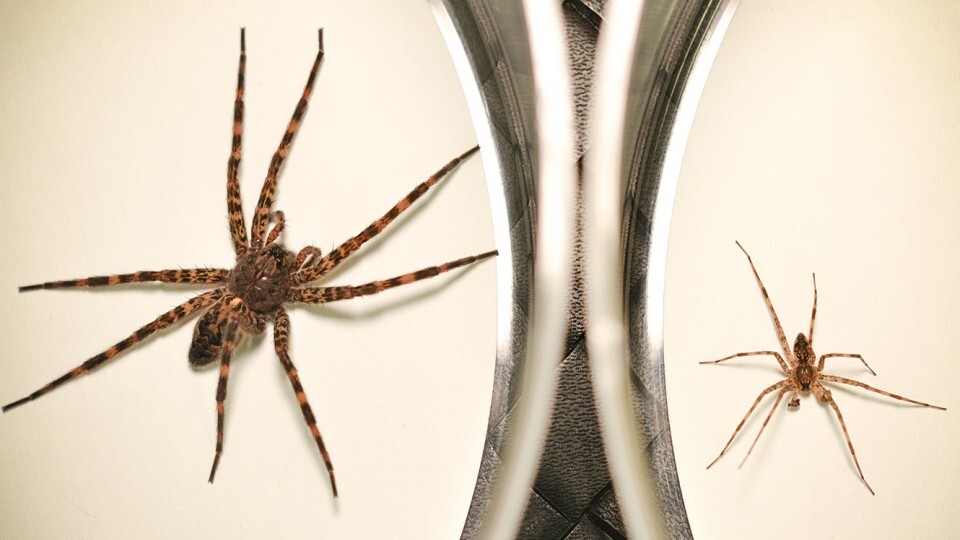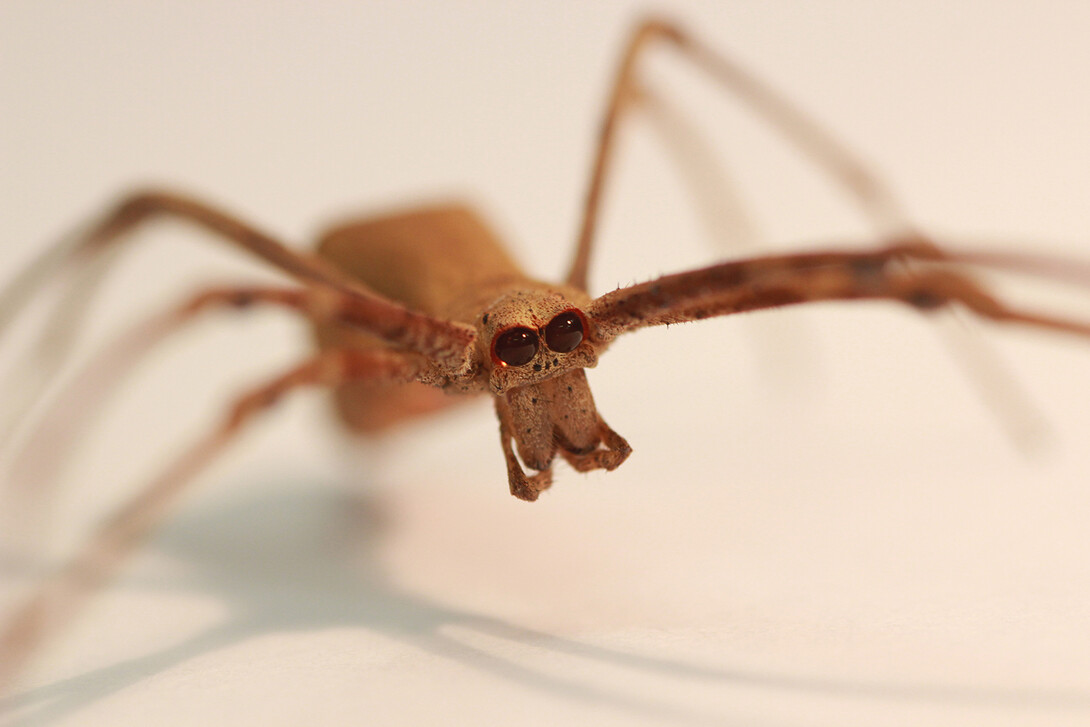
Given the nature of spiders, it’s fitting that the Halloween decorations based on them are so often seen clinging to surfaces or dangling from ceilings.
For all the ways that Halloween highlights the eight-legged critters, though, the holiday also plays on the feeling most associated with them: fear. It’s a perception that Nebraska’s Eileen Hebets and her fellow arachnologists, through research and outreach, are working diligently to overcome. In spiders and the 10 other orders of arachnids, Hebets sees animals not to be feared but celebrated; forms not to cringe at but marvel at; behaviors not to scorn but study.
In that spirit, here’s a brief rundown of what Hebets and her colleagues have recently discovered about arachnids — and how the Charles Bessey Professor of biological sciences is turning fear into fascination.
Dying to hook up?
Female spiders often wield the power in a relationship, as demonstrated by the nursery-web species Pisaurina mira. The female P. mira will frequently try to eat her mate shortly after the male has deposited his sperm. A male, for his part, will sometimes bind the female’s forelegs together with silk before sex. Though it was suspected that males practice bondage to reduce their odds of becoming post-sex dessert, the hypothesis had never been tested.
An experiment from then-doctoral student Alissa Anderson and Hebets found that 70% of the males that restrained their female partners managed to survive their sexual encounters. When males were prevented from engaging in bondage, just 10% avoided getting eaten. Anderson and Hebets also hypothesized that binding the female might help the male transfer more sperm and improve his chances of fertilization. A follow-up study from the duo showed just that: The bondage allowed males to deposit about twice as much sperm and sire about 25% more offspring.

But not every species fears the reaper. In fact, the male dark fishing spider — which is about 90% smaller than the female — actually embraces it for the sake of his offspring. The male spontaneously curls up and begins to die after mating with the female, which promptly devours him. Former doctoral student Steven Schwartz, along with Hebets and Professor Emeritus William Wagner Jr., discovered that male-devouring females produced spiderlings that were nearly 20% larger and survived about 50% longer. When a female instead dined on a cricket, even one the same size as her male partner, the effect disappeared.
Casting about for a good ogre-face
The species Deinopis spinosa is known both as an ogre-faced spider, for the massive secondary eyes that dominate its head, and a net-casting spider, for the rectangular band of wooly silk it wields to snare prey. As a doctoral student and member of Hebets’ lab, Jay Stafstrom found that those humongous eyes — the largest among all known arachnids — were essential to catching insects on the ground. When the eyes were obstructed, the species captured about 3 1/2 times fewer ground-bound insects than when it could peep through them.

Because the blindfold had no effect on D. spinosa’s ability to snag flying insects, Stafstrom suspected the species might be relying on sound rather than sight to hunt aerial prey. In a just-released study, he and colleagues showed that exposing D. spinosa to the low-frequency tones produced by flies, moths and other winged prey prompted spikes in both brain activity and airborne attacks.
D. spinosa’s resource-intensive eyes likewise serve little purpose when males mature and cease hunting in favor of searching for a mate. Stafstrom and Hebets discovered that mature males respond by rerouting their physiological resources elsewhere, leading the eyes to shrink by 25% in adulthood — even as the females’ eyes continue growing by 21%.
Eight-Legged Encounters
As committed as she is to research, Hebets knows first-hand that hands-on, face-to-face learning opportunities can pique curiosity, and satisfy it, in ways that nothing else can. So she helped spearhead Eight-Legged Encounters, an activity- and art-laden exhibit that has appeared at the University of Nebraska State Museum, the USA Science and Engineering Festival in Washington, D.C., the Toledo Zoo and the Denver Museum of Nature and Science.
The exhibit’s colorful, large-format paintings help draw in visitors. Its activities help those visitors understand, say, how a trapdoor spider senses disturbances in its trip wires or why predators flee from the acidic defense mechanism of the aptly named vinegaroon. Surveys of youth who visited the exhibit in Lincoln or Denver found that 87% wanted to learn more about spiders afterward, with 94% expressing interest in learning more about science in general.
And though it might seem catered to that younger crowd, Hebets said adults get ensnared, too.
“I love interacting with kids and encouraging them, but one of the greatest rewards is having parents who clearly had no interest in coming to this event — their children dragged them there — get completely wrapped up in it,” she said. “And they’re the ones who can’t leave.”







